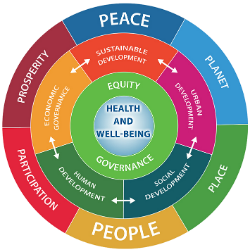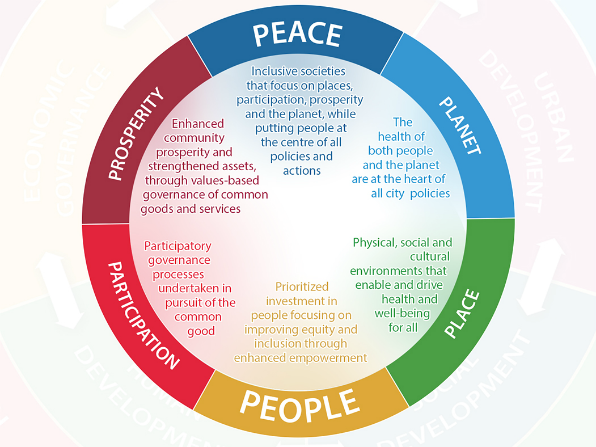Healthy Cities Vision

WHO
Healthy cities are places that deliver for people and the planet. They engage the whole of society, encouraging the participation of all communities in the pursuit of peace and prosperity. Healthy cities lead by example in order to achieve change for the better, tackling inequalities and promoting good governance and leadership for health and well-being. Innovation, knowledge sharing and health diplomacy are valued and nurtured in healthy cities.
People
A healthy city takes a human approach to development, prioritizing investment in people and ensuring access for all to common goods and services. This includes:
- investment in human and social capital as a strategic approach for urban development
- promoting inclusion, integration and non-discrimination
- building trust, resilience and a focus on ethics and values.
Participation
A healthy city leads by example ensuring community participation in decisions that affect where and how people live, their common goods and services. This includes:
- improved city spaces and services, based on the needs and assets in communities
- stronger accountability and governance for health and well-being
- empowered and resilient populations
- increased ownership over individual health and well-being.
Prosperity
A healthy city strives for enhanced community prosperity and strengthened assets through values-based governance of common goods and services. This includes:
- progressive measures of social progress
- investment in the circular economy
- universal minimum social protection.
Planet
A healthy city ensures that the health and well-being of both the people and the planet are at the heart of all the city’s internal and external policies. This includes:
- a whole-of-city approach to health and well-being
- coherence across levels of governance in the approach to health and well-being
- strengthened city health diplomacy.
Place
A healthy city creates an accessible social, physical and cultural environment that facilitates the pursuit of health and well-being. This includes:
- shifting from a needs-based to an assets-based approach
- human-centred urban development and planning
- integrating health equity and sustainability into urban development and planning
- enhanced inclusiveness in the use and governance of common spaces.
Peace
A healthy city leads by example by promoting and keeping peace in all its actions, policies and systems. This includes:
- institutions, governance systems and architecture that prioritize social justice and inclusive participation;
- the promotion of cultural norms of inclusion and equity, a non-exploitative egalitarian approach;
- formal governance and societal norms that tackle corruption, discrimination and all forms of violence.




